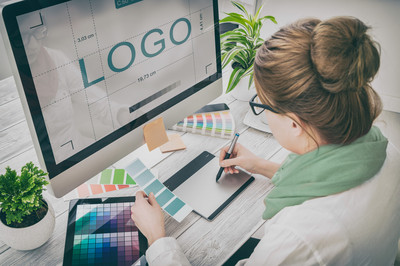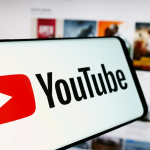11 Foolproof Tips You Need to Design a Successful Logo
by Robert Clough

Those famous golden arches. That swoosh mark. The smile on the side of your front-porch package.
There are some logos we can recognize from miles away. Then, there are those that leave us scratching our heads, wondering what exactly the brand represents.
If you’re at the helm of a small business, logo design matters more than you might think. It defines how customers perceive your brand and becomes a cornerstone of your identity.
Today, we’re sharing 11 tips that can help you create a successful logo that converts, sells, and builds community.
Ready to learn more? Let’s go!

1. Involve Your Team
Your employees are the ones who will be looking at, mailing out and sharing your logo across social media. When you’re creating the initial design, get their input!
After all, your logo represents your company, and your teams are its backbone. While you want a design that looks great and relays a particular message, you also want everyone on board.
Hold review meetings and gauge their feedback, taking it to heart and making adjustments as necessary.
2. Resist the Urge to Over-Complicate
It’s a competitive market, and to stand out, you might think your logo needs to be multi-faceted and complex. Or, you might take the opposite approach and over-simplify it to the point of extreme minimalism.
Both practices aren’t in the best interest of your company. Your logo should be relevant to the brand, product, or service it represents. Remember the backlash that Uber received when it unveiled its unrecognizable logo? Learn from that mistake.
3. Consider Your Target Market
If you’re targeting middle-aged women, a logo that appeals to teenage boys might fall flat. Keep your ideal buyer in mind when designing your logo, taking into account color scheme, graphics, and even font choice!
The good news is you don’t have to have a degree in graphics design to do so. You can make a logo in minutes with an online logo maker!
4. Remember Global Impact
This tip might not apply to you if you’re a mom-and-pop business only serving your local community. Yet, if your business has a global reach, listen up.
Check to ensure that your logo doesn’t contain any images or language that could offend someone in a different location or culture than your own. It should be a universally-recognized symbol that doesn’t ostracize any group.
5. Expect Change
If all goes well, your business will grow and scale. That means your logo will likely change, too. As such, build flexibility into your design!
Especially if you’re still in the early stages of building your brand, you might not have ironed out all the wrinkles yet, and that’s OK. Get the initial concept out there and anticipate adjustments as time goes on.
6. Perform the Five-Year-Old Test
When in doubt, ask yourself: Would a five-year-old be able to recognize and recall this logo?
If the answer is “no”, dig deeper and figure out why.
A good logo design is clear and easy to remember. Add too many colors, elaborate lines or fanciful font choices and you’ll muddle your message.
Another test you can perform? Show the prospective logo to 10 strangers for a few seconds, and then ask them to draw it from memory. If they struggle, it’s too complex.
7. Prioritize Responsive Design
A well-designed logo looks as good on a small, handheld device as it does on a big desktop computer. Follow the steps for responsive web design when creating yours.
Create various formats and layout options that help your brand shine across platforms and screen sizes.
8. Don’t Get Too Trendy
One of our best logo design tips? Create one that will still look as relevant and timeless in 20 years as it does today.
In other words, ignore flash-in-the-pan design trends. That farmhouse font in front of a shiplap background might scream “2019” a few decades from now.
Focus on what elements define your brand and highlight them. When you do, you’ll stay both current and classic.
9. Find Your Differentiator
Though you don’t want to get too abstract, your logo design should incorporate some element of what makes your brand unique.
Meet with your teams and discuss your core differentiator. Then, highlight this in some fashion when you’re ready to discuss drawings. The best logos are those that stick in our minds long after initial contact, aiding in brand recall efforts.
10. Make Sure It’s Readable
Is your logo font-only? If so, you’ll join the likes of Zara, Canon, Gucci and other major players who eschewed graphics altogether.
While this is a fine approach to take, make sure to choose a readable font! While this sounds like a simple step, it’s often easier said than done. Changing from a serif font to a sans-serif option can make a world of difference.
11. Look for a Clever Add-In
How old were you when you first noticed the arrow inside the FedEx logo? Or, when you saw the third Hershey’s kiss between the letters “K” and “I”?
Some of the most interesting logos include clever touches like this that leave viewers talking. The best part? You don’t have to be a major corporation to try this step. The Bronx Zoo logo snuck in a New York City skyline between the legs of the giraffe!
Design a Successful Logo and Stand Out
Your logo is the face of your brand. What expression does it relay?
Whether you’re still building your business or you’ve been in the industry for decades, there’s always time to tweak your design. A successful logo is one that relays your team’s mission in a recognizable way that stands the test of time.
Consult your teams, consider your target buyers and don’t be afraid to return to the drawing board with edits. As your company grows, your logo should, too!
Want more digital marketing news you can implement today? Explore the rest of our site for insider tips on everything from accounting to viral marketing.

Be sure and visit our small business news site.









Recent Comments